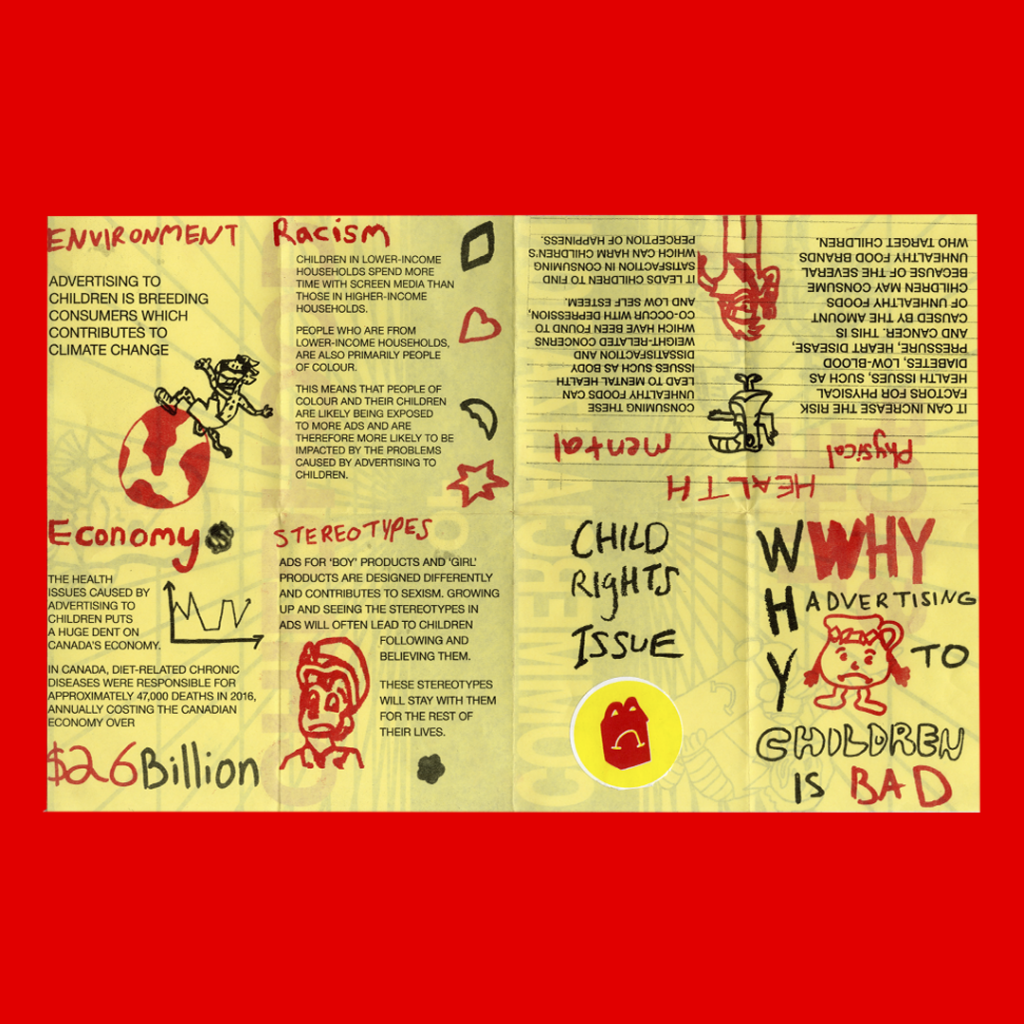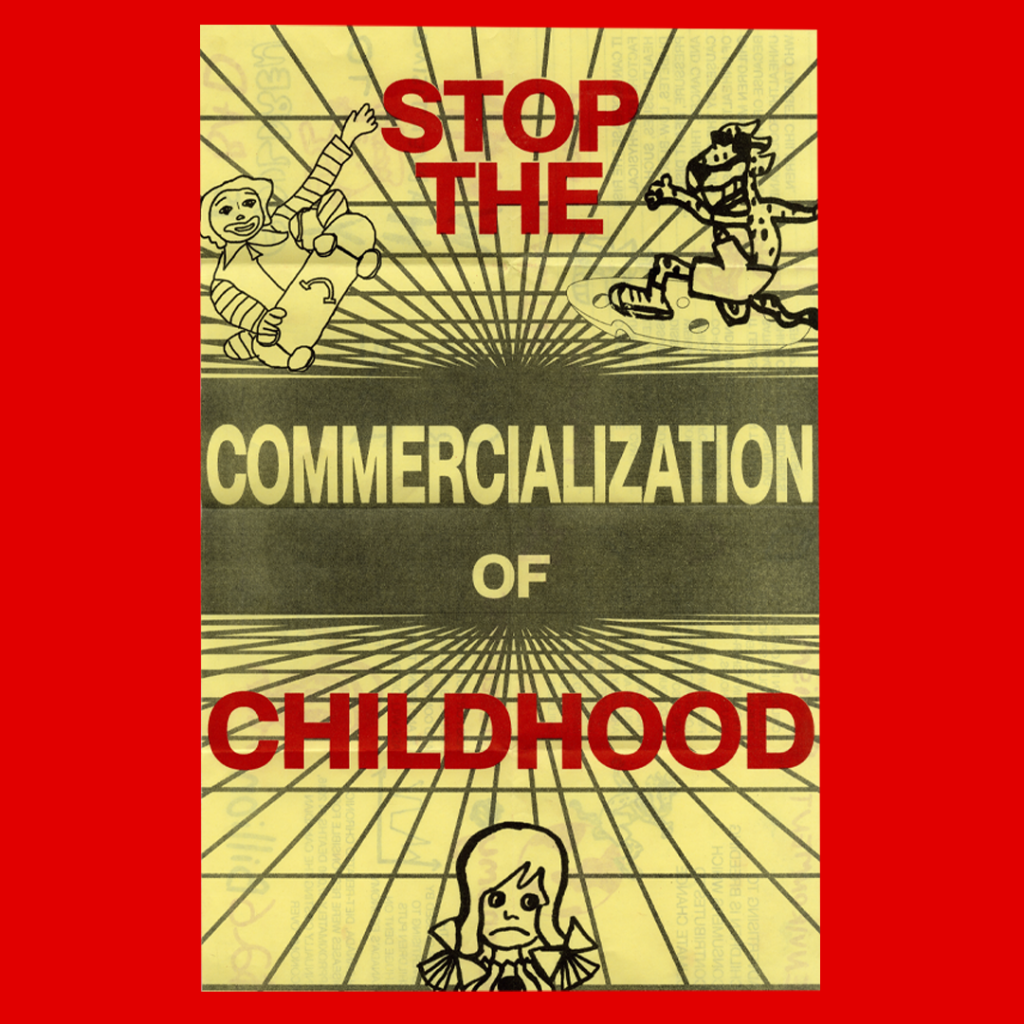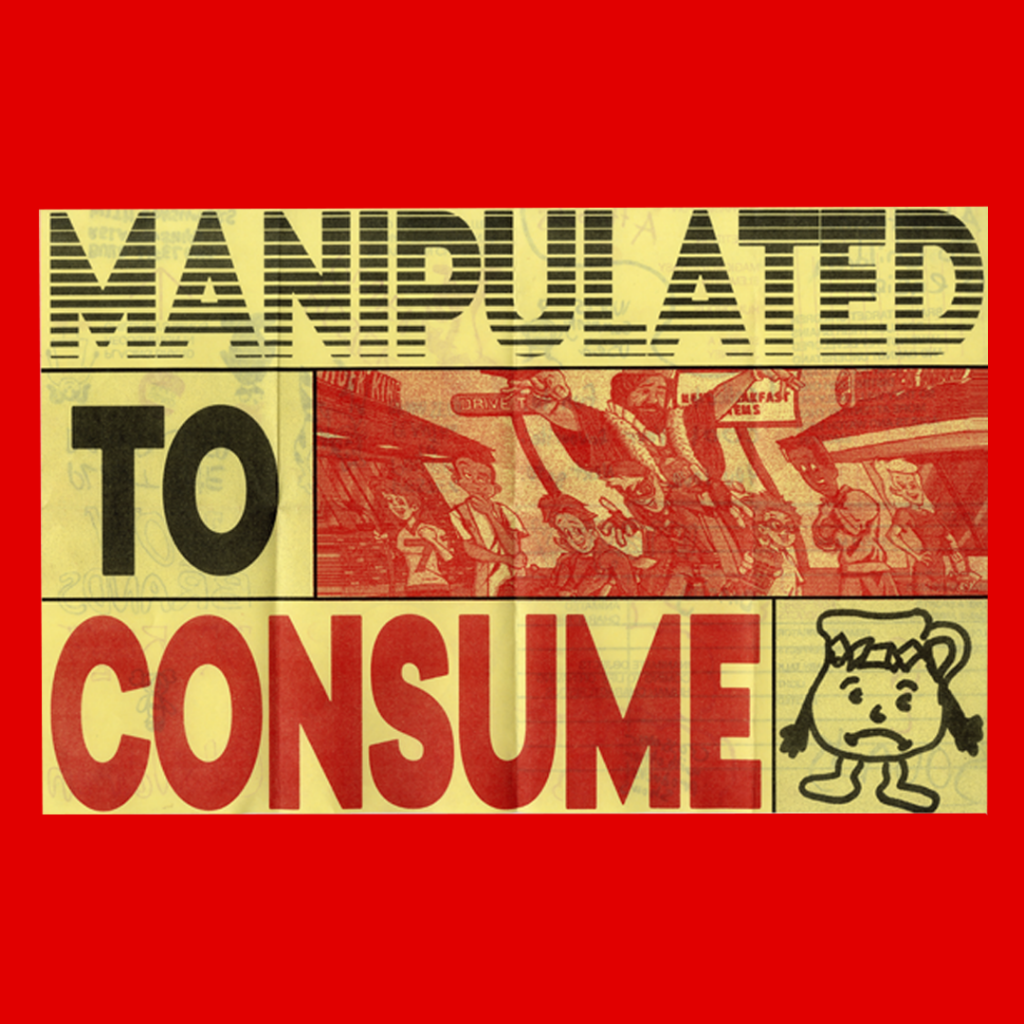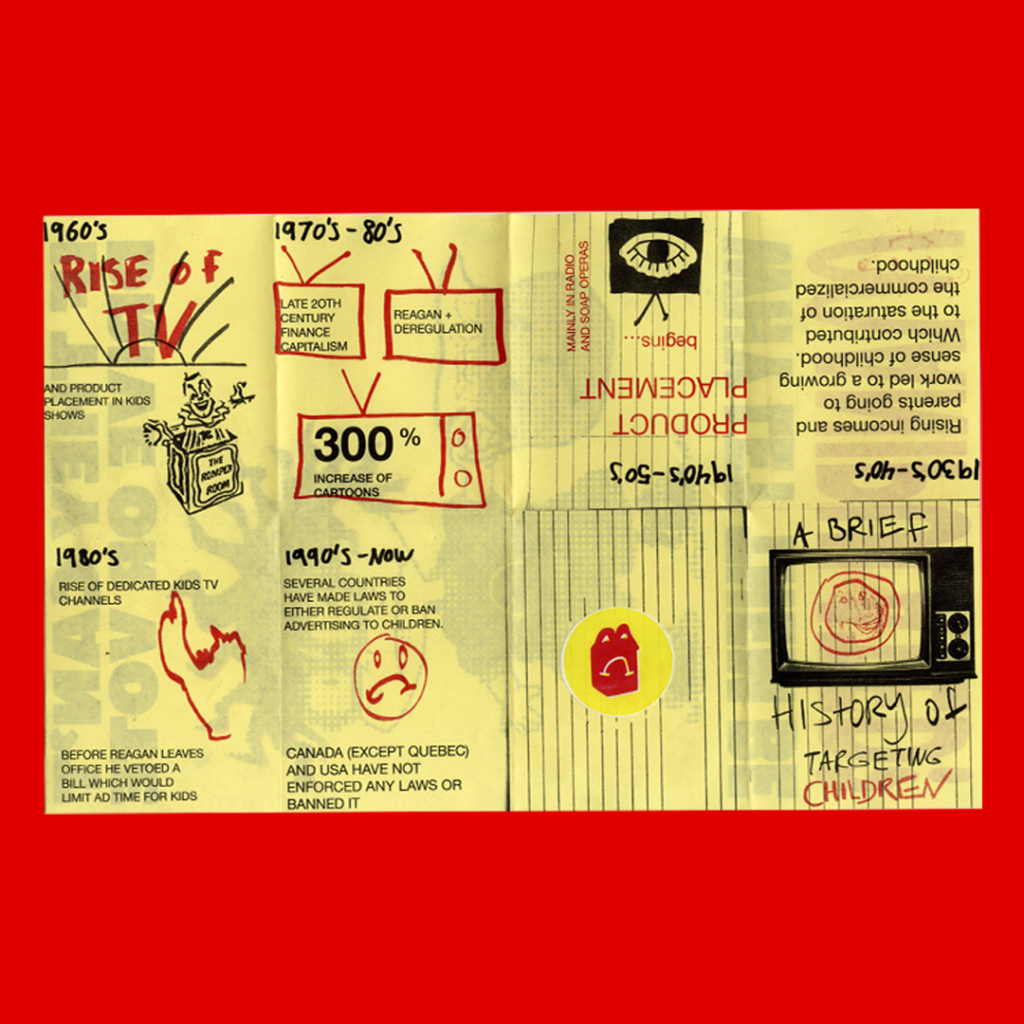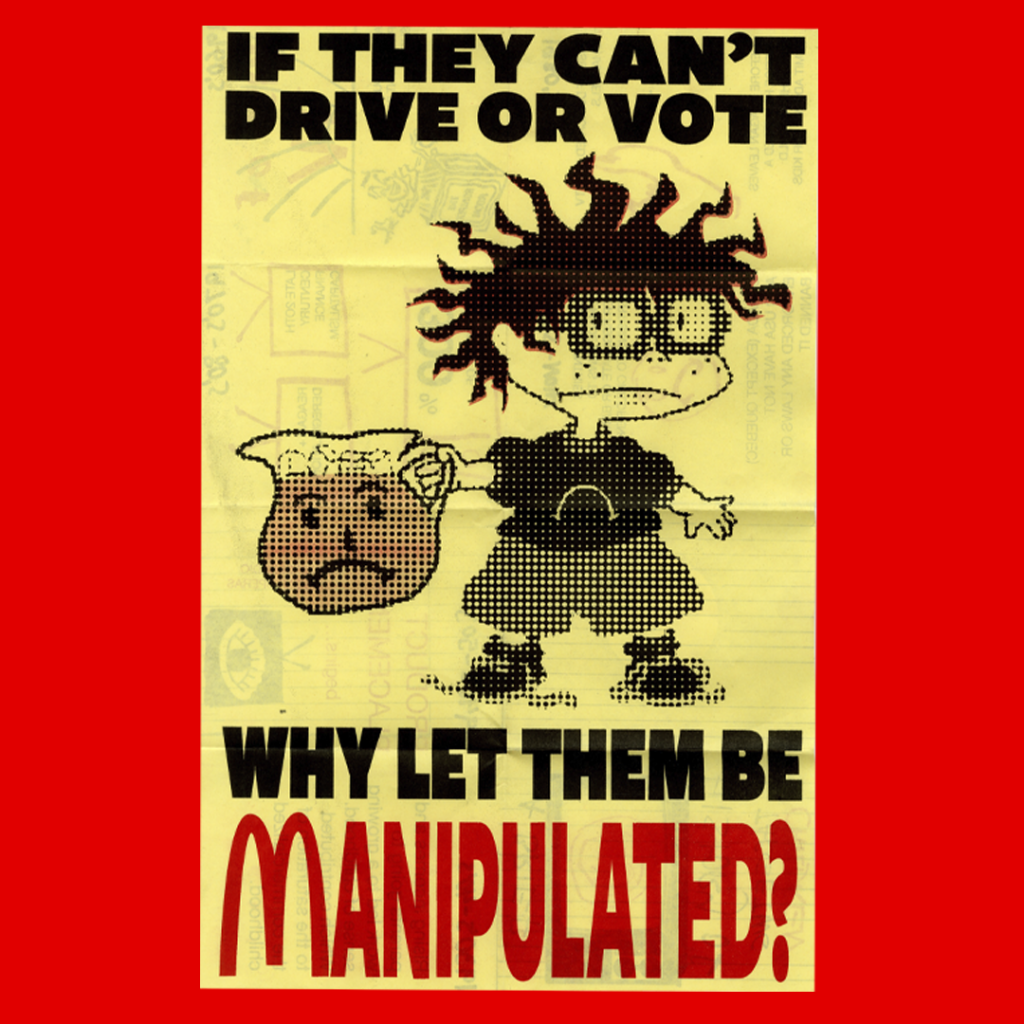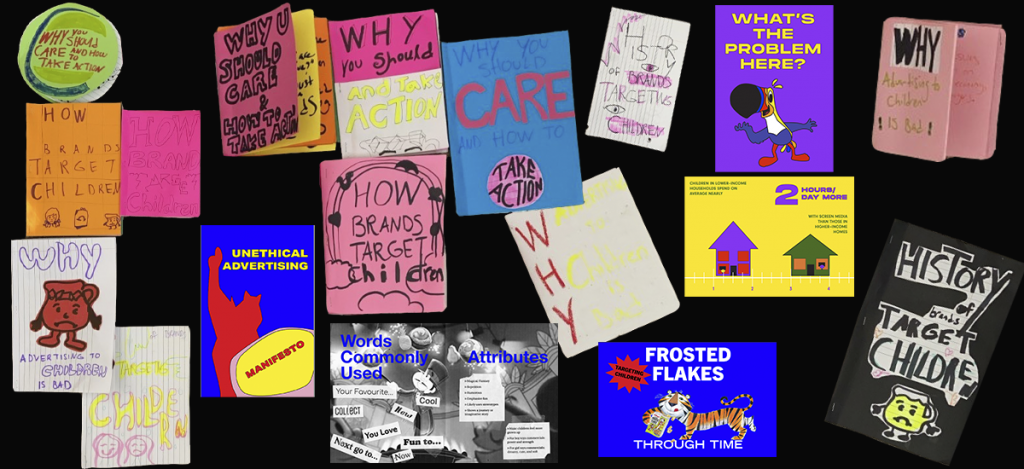STOP ADVERTISING TO CHILDREN
Aviva Davis
Creating awareness and starting a movement among Canadians without children, about the problems with child targeted advertising.
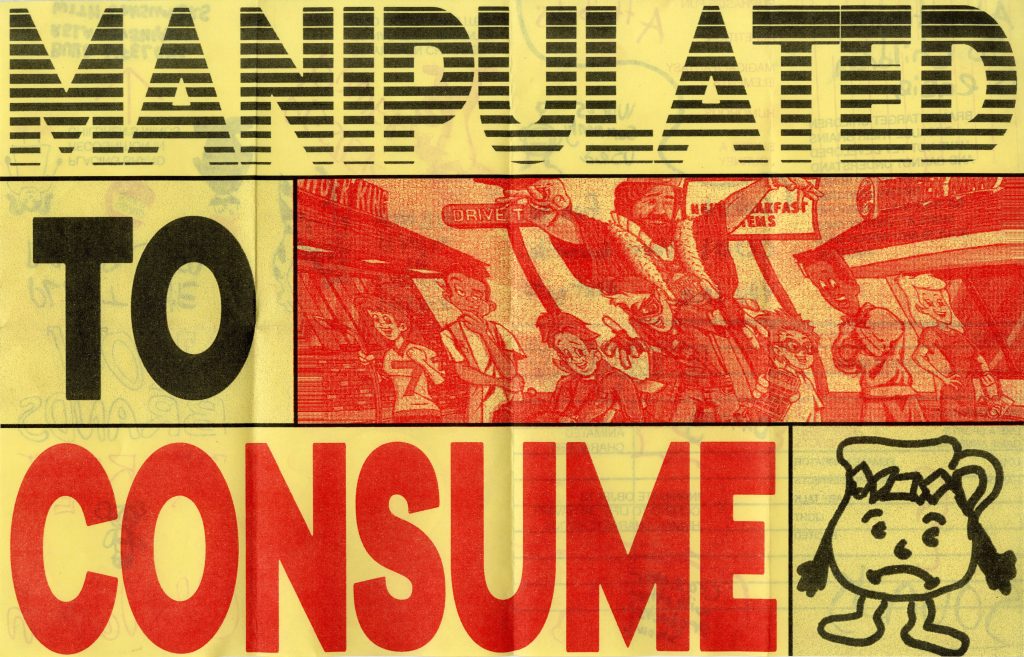
PROBLEM SPACE
Children’s brains are like a sponge. They absorb as much information as they can during this time in order to grow and learn to become functioning adults. While they are absorbing things like how to hold a spoon, they are also absorbing every ad they see. Advertisers target children because of this through “pester power”. This means relying on children to nag their parents to purchase the item. Targeting children is unethical and inherently unfair because they are biologically not capable of understanding an ad’s intent. One of the articles from the Convention on the Rights of the Child by the United Nations says that, “States parties shall ensure to the maximum extent possible the survival and development of the child”. Therefore advertising to children is violating children’s rights.
Advertising to children affects not only one generation, but the next and the next because each generation is being manipulated and are therefore unaware of the impact of this issue. The system cannot be stopped if society doesn’t know any other way of life.
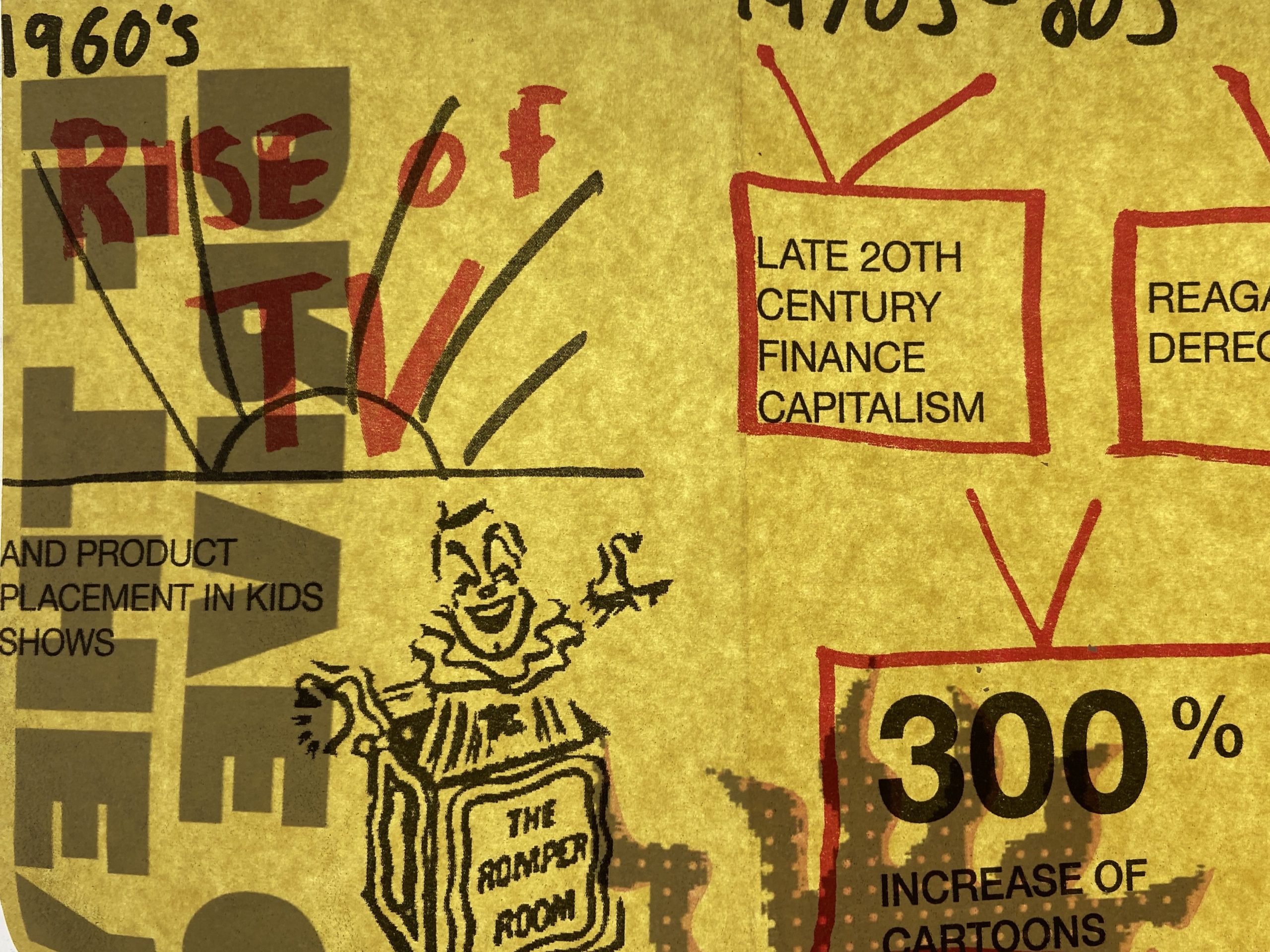
IF TARGETED ADVERTISING TO CHILDREN IS UNETHICAL, DOESN’T SOCIETY HAVE A MORAL OBLIGATION TO PROTECT CHILDREN?
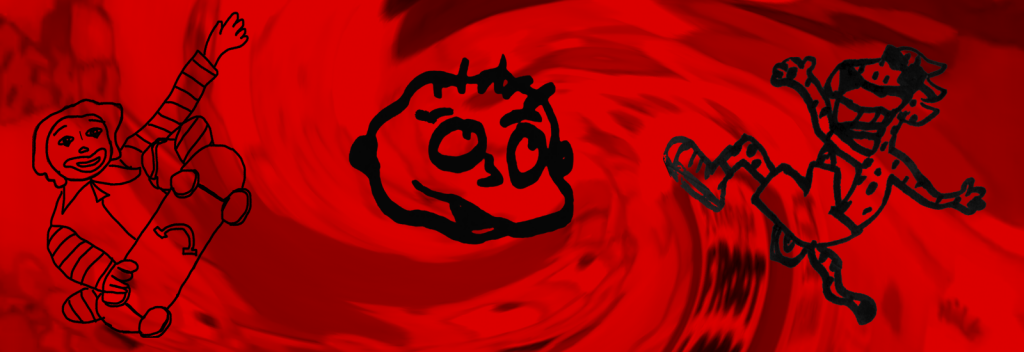
APPROACH
Stop Advertising to Children is a mini-campaign to inform Canadians about the unethical practice of targeting children through advertising. Through months of research, I have created a 4 part zine which focuses on the history of advertising to children, the ways they target, the negative effects, and how to take action. Each zine was Riso printed, uses a French fold and has a poster on the other side. Through my zines, I show a summary of the problem and hopefully get people involved. The zines are distributed by: having a list of my sources wrapped around the 4 zines with my business card. I plan on leaving some of the zines around the city in public places such as the library. Other elements included in my project are:
- stickers
- manifesto
- petition
- instagram page
- iron-on patches
OBJECTIVES
- For people to understand the issue, primarily the health impact, and how we have all been targeted
- Feel part of the movement to stop this unethical practice
- To then take action and put pressure on the industry (advertisers/government) to make changes and enact laws
SAD MEAL
4 ZINES
STICKERS & PATCH

BUSINESS CARD AND SOURCES
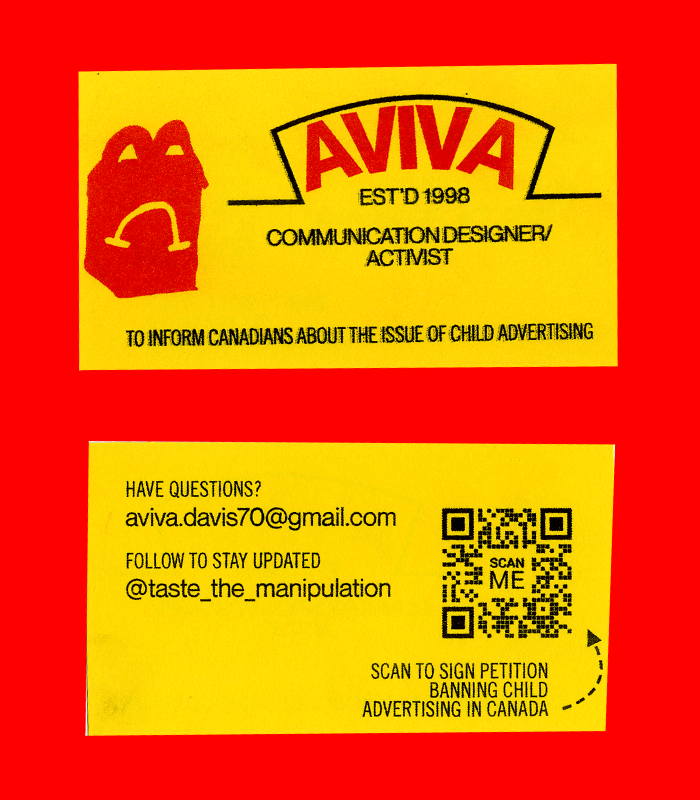
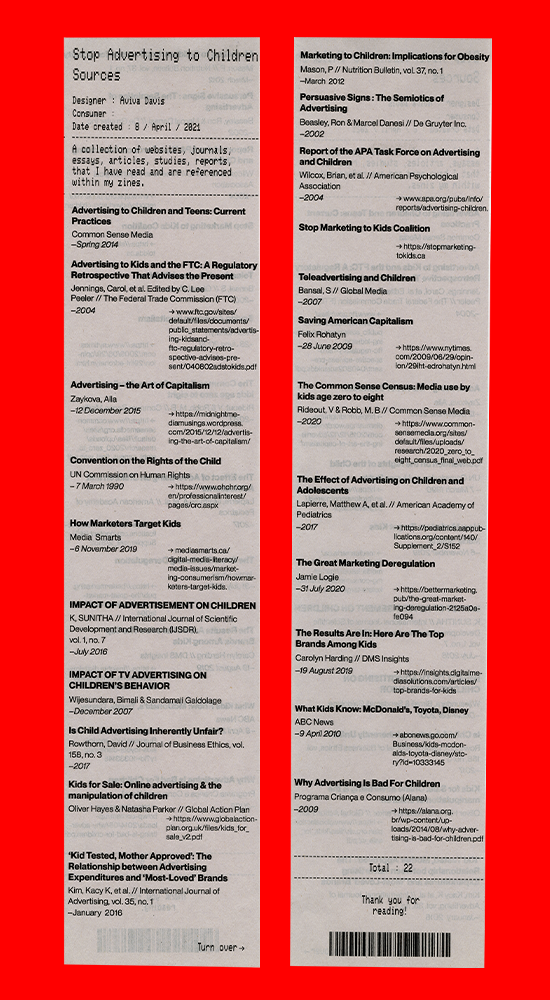
WHY I MADE THIS
This project has become very important to me and is something that I hope to continue after graduation. After spending this year watching commercials, analyzing them, reading, and having discussions about the issue, child advertising truly disgusts me. It is not only extremely unethical, but also contributes to so many other issues such as climate change, sexism, racism, the mental health epidemic, and more. To me the question is not why should it be banned but how was it even allowed in the first place? So please sign my petition and follow the Instagram account where this project will be archived as well as other information to stop advertising to children.
MANIFESTO
Advertising to children:
1) Can cause long term & short term mental and physical health issues.
It can increase the risk factors for physical health issues, such as diabetes, low-blood pressure, heart disease, and cancer. This is caused by the amount of unhealthy foods children may consume because of the several unhealthy food brands who target children. Consuming these unhealthy foods can lead to mental health issues such as body dissatisfaction and weight-related concerns which have been found to co-occur with depression, and low self esteem. Advertising to children can change their behaviour by convincing the child to prioritize consuming. This can increase conflicts between children and their parents and/or other children. Also, it leads children to find satisfaction in consuming which can harm children’s perception of happiness.
2) Contributes to wider social issues.
Stereotypes are often depicted in advertising, especially in children advertising. Sexism is particularly an issue which is seen in a variety of ways. For example, ads for ‘girls’ will likely take place in a girls room full of ‘girly’ decor. While ads for ‘boys’ will take place in a gym or sports like arena. This is contributing to the stereotype that boys should play sports and girls should stay in their rooms. Advertising to children can contribute to racism. In one report, it showed that children in lower-income households spend on average, nearly two hours per a day more with screen media than those in higher-income households. People who are from lower-income households, are also primarily people of colour. This means that people of colour and their children are likely being exposed to more ads and are therefore more likely to be impacted by the problems caused by advertising to children.
3) Negatively affects the environment and economy.
Advertising to children is breeding consumers which contributes to climate change. One of the leading factors of climate change is over-consumption. This over-consumption is caused by children who then become adults who feel the need to over consume with things whether that’s toys, clothes, or food. The health issues caused by advertising to children puts a huge dent on Canada’s economy. In Canada, diet-related chronic diseases were responsible for approximately 47,000 deaths in 2016, costing the Canadian economy over $26 billion annually.
4) Affects/affected everyone.
The issues that I have mentioned don’t just end once you become an adult. These issues can last or cause other problems throughout one’s life. This isn’t a new problem either. Advertising to children is a systemic issue that began in the 60’s and got worse in the 80’s. This means that there are several generations alive right now that have been a victim of this and may not realize the problem. Because they are unaware, the problem will continue.
5) Needs to be banned/regulated
Sweden, Brazil, Ireland, Norway, Chile, Quebec and several other places have banned or regulated advertising to children. In 2011, University of British Columbia’s researchers Dr. Tirtha Dhar and Dr. Kathy Baylis estimated that the Quebec ban reduced fast-food consumption by US $88 million per year. And in terms of calories, that reduction represents 13 to 18 billion fewer fast-food calories per year. This shows how restricting advertising to children is not just possible, but also beneficial to the population.
What would a world without advertising to children look like? I believe we would see:
- a decline in climate change caused issues
- a decline in people understanding the world in a gender-binary way
- a rise in people who find happiness from human interactions or the environment rather than from things
- kids enjoying their childhoods to the full extent
- overall a more equal, healthier, and happier population
I want to live in a world where children are respected and are not seen as things you can make money off of. Childhood should not be commercialized. We can make stop this by:
- Signing a petition
- Following my insta where more information about the issue can be found: @taste_the_manipulation
- Contact your MP or any government official and tell them why advertising to children needs to be banned
- Question your shopping habits
- Next time an ad is playing notice the way it is targeting you or a child
- Spread the word!!!
My goal is for everyone to come together to put pressure onto the Canadian government to enact laws which would prohibit advertisers from targeting children. We can’t undo the past, but we can help make sure the next generation are given the opportunity to be just a kid.
PROCESS
A large portion of my process was making zines exploring different aspects of the problem. Each zine is different in their own way using different materials, such as including videos, collaging, pastels, markers, stickers, illustrator, and more. In one week, I made 15 zines, working quickly to focus more on the concept and less about professionalism.
